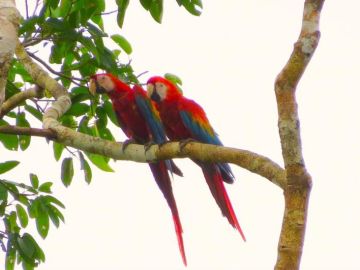
Birdwatching Guide for Amazon Rainforest Cruises
With over 1,800 species, of which 139 are endemic, the birds of Peru are spectacularly diverse.
But the Peruvian Amazon is a perennial hotbed of avian activity, with around 575 species identified within one 5,500-hectare section of the rainforest (by comparison, only 700 bird species are found in all of North America).
Here are few of our favorite Amazon birds:
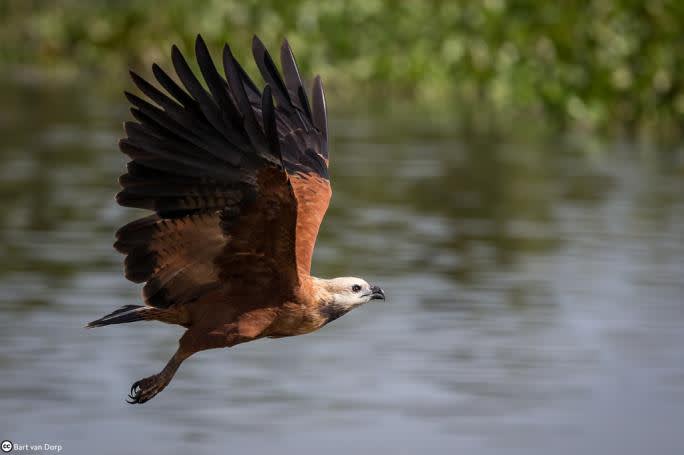
Black-Collared Hawk
Found in Central and South America as well as Trinidad & Tobago, this beautiful bird of prey inhabits subtropical or tropical moist lowland forests and subtropical or tropical swamps. It can be identified by a white head tinged with buff, with black shaft streaks on the crown; a bright cinnamon-rufous body that grows paler on the chest, with a black crescent on the upper breast; a back with black shaft stripes; and black tail feathers barred with rufous. You’ll often see them swooping down to feed on fish, small lizards, insects and rodents.
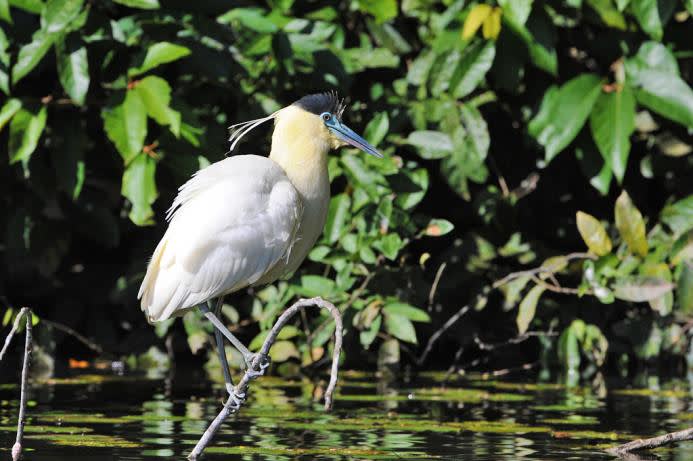
Capped Heron
This colorful bird is found in many parts of Central America and South America, typically around rivers, swamps and freshwater lakes. The species is noteworthy for the brilliant blue and pink colors on its beak, bright yellow feathers on its neck and underbelly, and long, skinny plumes coming off its head that make it look like a refined distant cousin to Africa’s famed Secretary Bird.
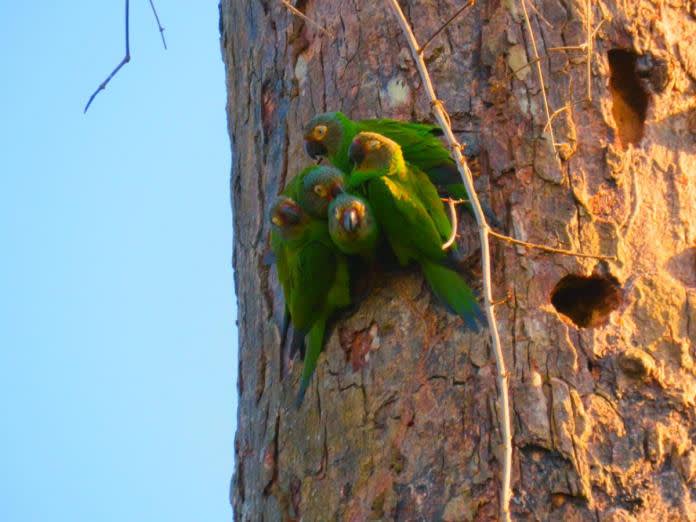
Dusky-Headed Parakeet
A common sighting in both the Amazon and domestic bird cages, this verdant green, blue and grey neotropical parrot is also known as the Weddell’s conure or dusky-headed conure. They prefer semi-open wooded habitats in the Western Amazon, but are also often seen in coffee plantations and in colonies around the Lima coast. Social, energetic and entertaining, they tend to be found in pairs or small groups, feeding on fruit, seeds, flowers and insects.
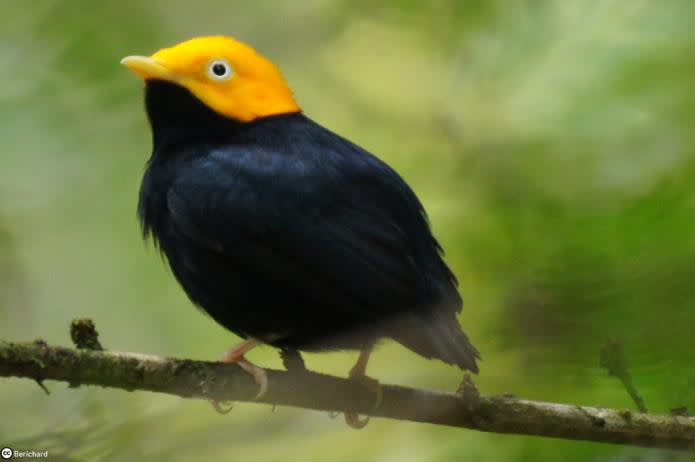
Golden-Headed Manakin
One of around 60 species of manakins found in the American tropics, the Golden-Headed Manakin is a colorful cutie typically measuring about 3.7 inches long and weighing less than half an ounce. Females and juveniles look similar to female White-Bearded Manakins, but adult males are black-bodied with a golden cap, white and red thighs, pink legs and yellow bill. Commonly found in low elevation forests and plantations, their jumping, sliding mating ritual and buzzing zit-zit call are a wonder to behold.
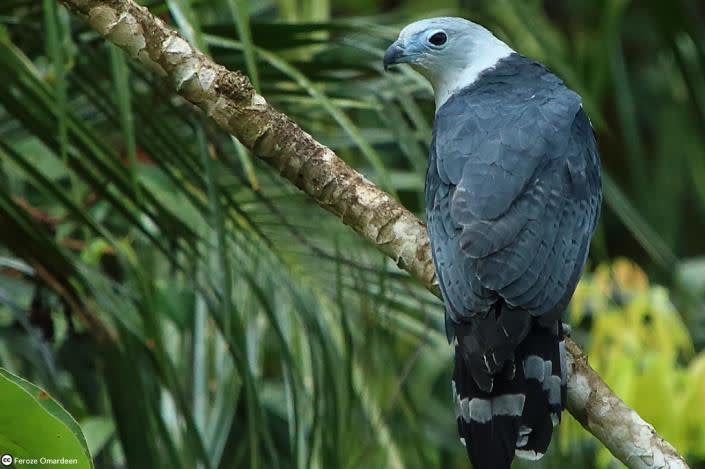
Grey-Headed Kite
This beautiful raptor species is found in open woodland and swamp-like forests ranging from eastern Mexico and Trinidad down to Peru, Bolivia and Argentina. The adult has a grey head and legs, blue bill, black upper body, white underbelly, and a black tail with two or three white bars. They are often spotted on high perches while hunting for reptiles, frogs and insects, with a striking profile and a distinctive mewling keow-sounding call.

Hoatzin
Also known as the Canje Pheasant (or punk-rock bird), Hoatzin are genetically enigmatic, and there’s been intense scientific debate about their evolutionary connections to other species. The pheasant-sized bird, whose chicks possess claws on two of their wing digits, is also called the Stinkbird due to the manure-like odor caused by its unique digestive system. Their noises are just as odd, including a bizarre variety of groans, croaks, hisses and grunts that are often associated with its body movements.
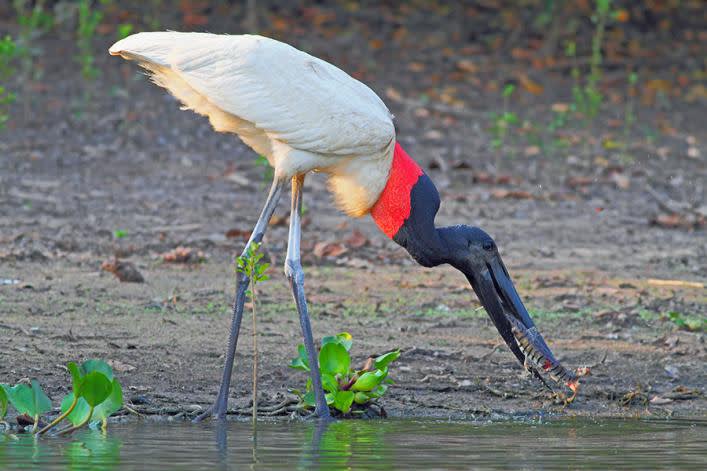
Jabiru Stork
The tallest flying bird in Central and South America, this species also has the continent’s second-longest wingspan (after the Andean Condor). Found in the Americas from Mexico down to Argentina, east of the Andes, they’re typically found in large groups near rivers and ponds, where they spend much of their time feasting of fish, mollusks and amphibians. Measuring four to five feet long, with black heads, white-feathered bodies and a vibrant red neck pouch, they make striking photo subjects.

Macaws
From Blue-and-Yellow and Scarlet Macaws to Green-Winged and Chestnut-Fronted Macaws, these New World parrots will easily rank among the most colorful birds you’ll see in the Peruvian Amazon. More often than not you’ll hear them squawking loudly long before they come into sight, usually flying over in mating pairs. You may also spot them in groups in the trees, feeding on seeds, nuts, fruits, leaves, flowers and stems.
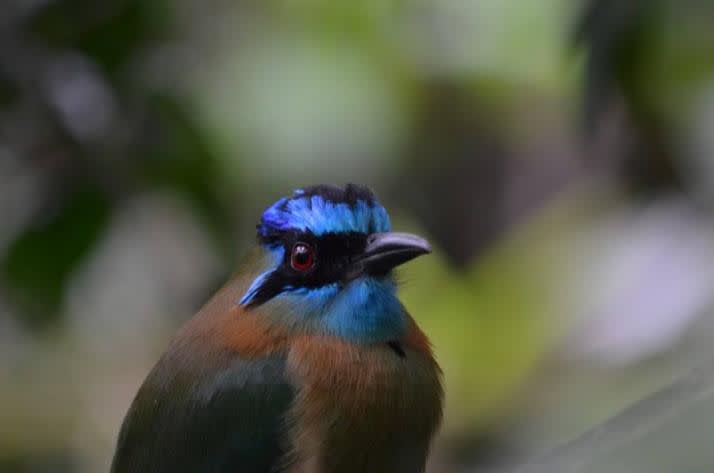
Motmots
Passerine birds related to Kingfishers and Bee-Eaters, these neotropical forest-dwellers are known for their colorful plumage, large bills and long tails (some with a racket-like tip) that they use for wagging at predators and, in the case of males, attracting mates. Living in colonies of up to 40 paired individuals, Motmots typically nest in riverbank tunnels, and feed on everything from fruit and insects to frogs, lizards and other small prey.
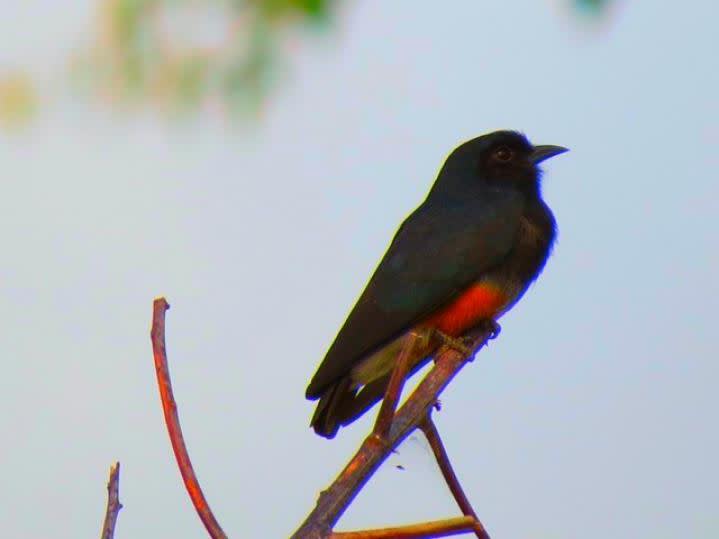
Puffbirds
Shy and secretive by nature, these tropical tree-dwelling insectivores can be found from Mexico down through South America. But, with their preference for forested habitats, their greatest species diversity can be found in the Amazon Basin. They may lack the iridescent colors of their cousins, the Jacamars, but the Puffbirds’ loose plumage, short tails, and brightly-colored bills and eyes give them undeniable appeal. They rarely vocalize, preferring to sit still and quiet while waiting for insects on which to prey, but you might hear their repeated, high-pitched whistles at dawn and dusk.
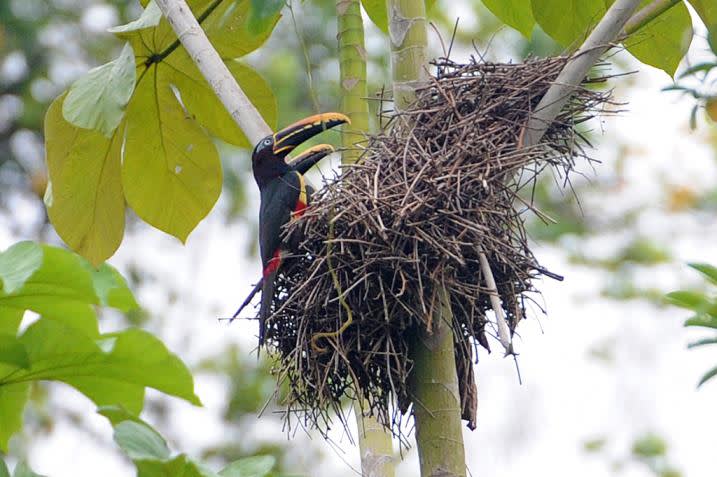
Toucans
From the 11.5-inch tall Lettered Aracari to the 29-inch Toco Toucan, this family of around 40 different species can be found throughout Central and South America and rank among the most popular sightings in the Amazon. Perhaps it’s their bright markings and huge colorful bills, or perhaps it’s just the fact that it reminds people of a favorite childhood breakfast cereal. Regardless, you’re almost certain to see them, either nesting in hollows or feeding on fruits in the Amazon trees.
